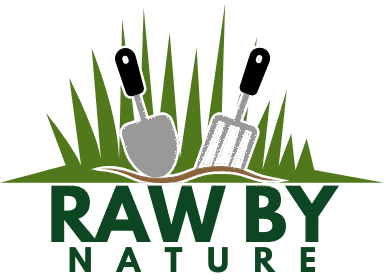In the fast-paced whirl of modern life, finding time to nurture a garden might feel like a distant dream—yet, the joy of seeing your plants thrive can be a rewarding escape from the hustle and bustle. Whether you’re just starting to explore the wonders of gardening or you’re a seasoned green thumb looking for fresh insights, “Gardening Tips for Busy People” is your gateway to transforming small moments into flourishing greenery.
Imagine stepping into a garden that virtually takes care of itself, offering bursts of color and vitality with minimal fuss. This guide is packed with clever design ideas and time-saving techniques that will not only fit seamlessly into your schedule but also enrich your life with the satisfaction of a thriving garden. Here, you’ll discover how to cultivate a space that brings joy and a sense of accomplishment, regardless of how tight your schedule might be.
Opt for Low-Maintenance Plants

Choosing low-maintenance plants can significantly ease the demands of gardening for busy individuals. These plants often require less frequent watering and are typically more resistant to pests, making them ideal for those with limited time.
Consider incorporating succulents into your garden, as they thrive in well-draining soil and need minimal watering. An occasional deep soak is usually sufficient, allowing the soil to dry out completely between waterings, which is perfect for a hands-off approach.
Another excellent choice is perennial plants, which return year after year with minimal intervention. Opt for varieties like lavender or daylilies, which flourish in full sun and require just occasional pruning to maintain their shape and vigor.
For a splash of green without extensive upkeep, ferns can be a wonderful addition. They prefer indirect light and high humidity, making them ideal for shaded areas of your garden, and they need only a light misting of water to stay lush.
Set Up Drip Irrigation System

For busy gardeners, setting up a drip irrigation system can be a game-changer. This system delivers water directly to the roots of your plants, ensuring they get the moisture they need without wasting a drop.
Firstly, assess the layout of your garden to determine the best placement for your drip lines. Consider using a grid pattern for vegetable gardens or a serpentine pattern for flower beds to cover more area efficiently.
Once you’ve planned the layout, select the appropriate drip lines and emitters. Drip lines with built-in emitters are ideal for evenly spaced plants, while separate emitters allow for more flexibility in spacing for larger plants.
Install a filter and pressure regulator at the water source to maintain system efficiency and prevent clogging. It’s crucial to regularly check these components to ensure they are functioning properly, preventing blockages and maintaining water flow.
After setting up the system, program a timer to automate the watering schedule. This not only saves time but also ensures consistent watering, which is vital for plant health during dry spells.
Finally, periodically inspect the system for leaks or clogs and make adjustments as needed. Regular maintenance will ensure your drip irrigation system continues to perform effectively, keeping your garden lush with minimal effort.
Utilize Mulch to Reduce Weeding

Mulching is a powerful technique that can significantly reduce the time you spend weeding. By covering the soil with a layer of organic or inorganic material, you can effectively block sunlight, which prevents weed seeds from germinating.
Consider using organic mulches like shredded bark, straw, or compost for their added benefit of improving soil health as they decompose. Organic mulches not only suppress weeds but also help retain soil moisture, reducing the need for frequent watering.
For a more decorative approach, inorganic mulches such as gravel or stones can be used, although they won’t add nutrients to the soil. When applying any type of mulch, make sure to leave a small gap around the stems of your plants to prevent rot.
To maximize the benefits, apply a layer of mulch about 2 to 3 inches thick. Too thin a layer won’t effectively suppress weeds, while too thick a layer can limit water and air reaching the soil.
Advanced gardeners might experiment with different mulch materials to suit specific plants, such as using pine needles around acid-loving plants like azaleas and blueberries. This tailored approach not only enhances the health of these plants but also contributes to a more aesthetically pleasing garden.
Group Plants by Water Needs

Grouping plants by their water needs can significantly simplify your gardening routine, especially if you’re juggling a busy schedule. By organizing your garden into water zones, you can efficiently manage your time and resources, ensuring that each plant receives the right amount of hydration without unnecessary effort.
To begin, identify which plants in your garden require similar watering frequencies. Drought-tolerant plants, such as succulents and lavender, thrive with minimal water and are ideal for those who can only water occasionally. In contrast, thirsty plants like tomatoes and ferns need more consistent moisture and should be grouped together in an area that receives more frequent watering.
For beginner gardeners, consider using a drip irrigation system to automate watering based on plant needs, reducing the guesswork and saving time. Advanced gardeners might explore soil moisture sensors to monitor conditions precisely, ensuring that each plant group receives adequate water without waste.
When planting, ensure the soil type matches the plants’ water requirements; sandy soils drain quickly and suit drought-tolerant plants, while clay-rich soils retain moisture better for water-loving species. By planning your garden layout strategically, you can not only save time but also promote healthier plant growth and reduce water usage, making your gardening efforts more sustainable and rewarding.
Schedule Short Daily Garden Tasks

Incorporating short daily garden tasks into your routine can make plant care more manageable. Devote just 10 to 15 minutes each day to specific tasks, and you’ll soon see a thriving garden without overwhelming yourself.
Begin by inspecting your plants for any signs of pests or disease, as catching problems early can save you a lot of trouble later on. Simply walk through your garden, checking leaves for discoloration or holes, and remove any affected foliage to prevent spread.
Watering is another task you can manage daily, especially in the warmer months when evaporation rates are higher. Use a watering can for precision, focusing on the soil rather than leaves to minimize the risk of fungal diseases.
For those with more experience, consider rotating your plant types every couple of days to ensure different plants get the attention they need. On Monday, you might focus on your vegetables, while Tuesday could be dedicated to flowering plants, allowing each type to receive tailored care.
Conclusion: Growing Success with These Plants
In “Gardening Tips for Busy People,” we explored five key relationship concepts to nurture your bond amidst a hectic lifestyle. First, we emphasized the importance of quality time, even in brief moments. Second, we discussed effective communication, highlighting how small check-ins can strengthen understanding. Third, we touched on the power of appreciation, encouraging regular expressions of gratitude. Fourth, we delved into the necessity of setting boundaries to protect your relationship space. Finally, we explored the art of compromise, a vital tool for navigating differing schedules and priorities.
Now, take a moment to implement one actionable step: schedule a 10-minute daily “relationship check-in” to connect and communicate with your partner. This simple practice can be a game-changer in maintaining intimacy.
Save or bookmark this article to keep these valuable insights at your fingertips. Relationship success is a continuous journey, and having these tips handy can guide you through the ebbs and flows of life.
Remember, nurturing your relationship is like tending a garden – with consistent care and attention, it will flourish. Empower yourself to take these steps today, knowing that with each action, you’re sowing the seeds of a thriving, resilient partnership.


